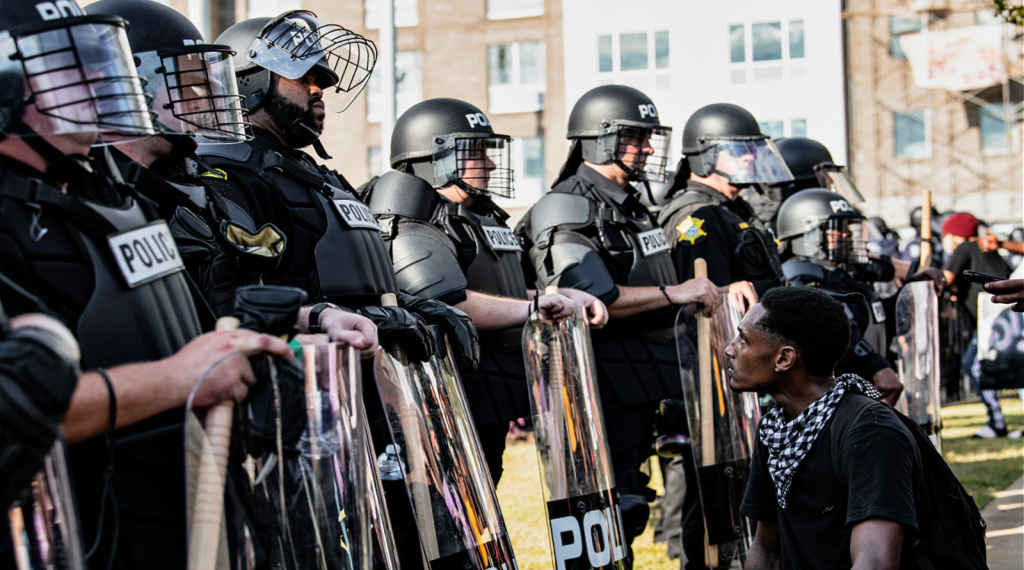Co-Authors: Emily Creighton and Tsion Gurmu
In the summer of 2020, after George Floyd’s murder, racial justice protests took hold in cities throughout the country. The massive mobilization reflected a nationwide groundswell of opposition to abusive and deadly policing. The importance of the movement and the need for change in the country was clear.
The government’s response to this historic moment—including mobilizing federal law enforcement to monitor and police protests—caused significant concern, especially because there was so little transparency about the federal role. Some may remember men in uniform taking a man into custody in Portland, Oregon, by pulling him off the street into an unmarked vehicle. The viral video of the incident caused fear and confusion among protestors and members of the public. When U.S. Customs and Border Protection (CBP) later admitted that the men in uniform were, in fact, CBP officers, the agency’s presence at the protest demanding racial justice became widely known.
Prior to the revelation that CBP was policing protests, members of the public might have assumed that CBP focused only on border policing. During the summer of 2020, however, it became increasingly clear that border enforcement officers were in cities throughout the United States. CBP’s presence at protests raised alarms, not only because the agency did not make its presence known, but also because of the legacy of racial discrimination in the Border Patrol, a component of CBP.
To better understand the scope of CBP’s presence at the protests, several organizations undertook a multi-year investigation, including litigation under the Freedom of Information Act (FOIA). Now, a new report publishes some of the documents uncovered in that investigation and reveals the widespread involvement and abusive enforcement tactics used by CBP during the 2020 protests.
The following are some of the report’s findings:
- CBP was present in cities and towns throughout the country. The agency appeared in locations as disparate as Whitefish, Montana and Philadelphia, Pennsylvania. The report includes a map that links cities to records documenting CBP’s presence.
- Emails among CBP agency officials reveal that CBP inserted itself in policing efforts even when CBP received no invitation from the local authorities where the agency appeared.
- During CBP’s deployment to Portland, which involved multiple teams of agents and occurred between July 2 and July 28, CBP officers used chemical agents—such as pepper spray—numerous times and were involved in numerous arrests.
- CBP surveilled protesters including by obtaining discussions among users of an encrypted messaging chat room.
- While the Trump administration and CBP communications described protesters as “rioters,” agency records contradict this narrative. CBP noted throughout its own reporting that protests were peaceful and smaller than expected.
- From the FOIA documents, it appears some of the only additional training many CBP agents received prior to deployments to protests was an hour-long online training, and the training was completed only a few days before deployment. One CBP official warned that agents should not be involved in direct interaction with the public because of insufficient training.
As the report points out, CBP and other federal agencies appeared in U.S. cities under the guise of protecting federal property and monuments, but the agency often went beyond this mandate, and arrested protesters for actions unrelated to protecting federal monuments.
Thousands of protesters gathered this past weekend to celebrate the 60th anniversary of MLK’s March on Washington. As we continue to recognize the important galvanizing work of racial justice movements such as the Black Lives Matter movement, we must be confident that our own government will not try to suppress these protests – which starts with transparency regarding the use and tactics of federal law enforcement. We must allow members of the public to come together safely to protest. A country where protests take place without fear of retribution by federal law enforcement agencies like CBP is vital for a healthy democracy.
Read more about this work in a deep-dive article in The Intercept.
FILED UNDER: Border Patrol Abuse, enforcement


